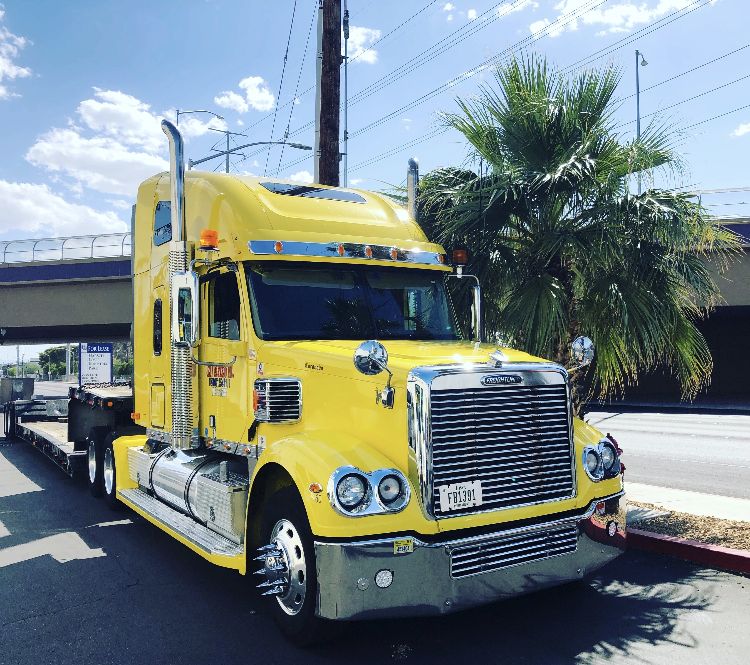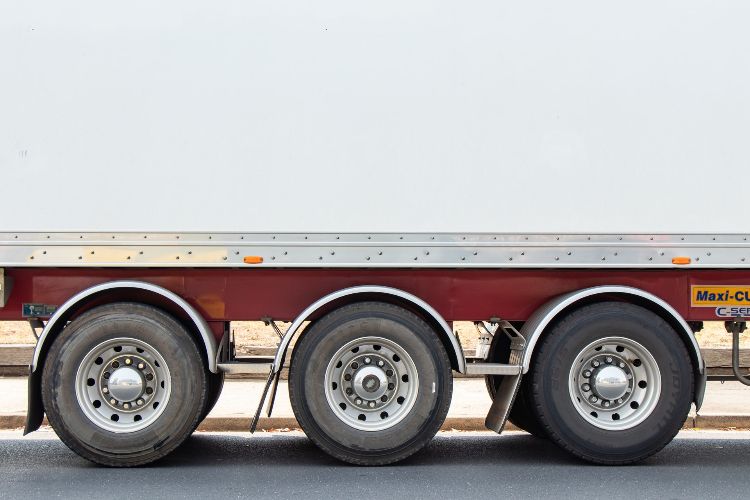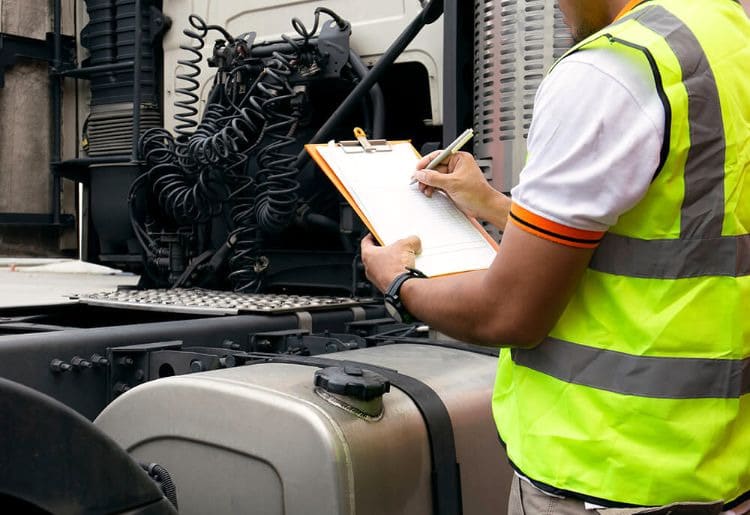Trucks and heavy vehicles can be a source of danger for roads and a hassle for drivers if not maintained. Regular truck inspections can help to avoid the roots of mechanical breakdowns. At the end of each trip, truck drivers are required to conduct a post-trip inspection of their trucks. This inspection includes an examination of all the important components of a truck.

Importance of a Post-trip Inspection
The main reason for this activity is to check and inform the maintenance staff of any complications that may have developed during the journey before starting the next one. Post-trip inspection prevents serious accidents and limits unnecessary delays that could prove expensive to the company. Plus, an efficient report helps the next driver to understand the issues of the vehicle correctly.
Drivers are the best persons to identify and report a fault easily therefore it is their responsibility to ensure their vehicles are properly checked. Experienced drivers who drive the vehicle all day can easily sense that something is not right. And few of them are even able to suggest the issues rightly on what might be wrong based on how the trucks feel to them. However, not everyone is an expert.
The easy way to conduct post-trip inspections for your vehicles is to have a company-wide checklist so that every driver can ensure to check all safety aspects of the vehicle before they hit the road.
Here’s a list of few key practices that drivers should follow to do a proper post-trip inspection:
Making a Report

The inspection report is a document mandatory to maintain for all heavy vehicles. Drivers should keep this report and update their logs regularly. Companies should provide a simple inspection form to truck drivers, so it is easier for them to review the vehicle without any complications. To make the job more precise, proper training for the drivers should be facilitated. Training can help the drivers to familiarize themselves with all the mechanical parts of the vehicle they are driving and stay abreast with the new technologies. This way they will be able to pay more attention to the details. Furthermore, they will be able to efficiently review every aspect of the process and complete the report effortlessly.
Braking System

The truck’s braking system is one of the most hard-working parts of a vehicle therefore they are also vulnerable to the most damage. Brakes should be checked from both inside and out of the truck and adjusted properly. Their chamber airlines should be properly secured. Most importantly, their airlines should be checked thoroughly for any kind of leakage to prevent serious accidents. These precautions help to avoid slippage and other major road crashes.
Truck Lights

Truck headlights, taillights, and signal lights all should be properly working. Drivers should check for cracks as dirt and moisture can enter inside and corrode the bulb leading to a lighting failure. Truck reflectors should not be defective as they improve the visibility of the truck. Reflective strips should be clean free of damage along with the cab and trailer. They are important to prevent any road accidents, especially at nighttime. Additionally, LED lights on the truck should be checked frequently. They have circuit boards that can overheat due to any damage which can lead to severe mishaps.
Windshield Wipers

Trucks usually travel on long routes with unpredictable weather conditions. Drivers should keep the windshield washer solvent reservoir full all the time so that they can clear the view while driving. This is crucial during the winter months when the windshield is more exposed to dew and snow. They should inspect the wiper blades frequently and replace them at least twice a year for best results. Worn-out wipers can damage the windshield and scratch the glass. Drivers should examine the wiper linkages, transmission, and motor. They should often test and troubleshoot the wiper system prior to starting a new journey.
Emergency Equipment

Truck drivers travel through remote areas where they might not get any help if the vehicle breaks down. Therefore, it is important to always carry an emergency kit with them. The kit must include spare fuses, warning hazard triangles, and a fire extinguisher. These tools should be up to date and intact. The fuses should be checked and working. The old fuses should be discarded. Used hazard triangles should be cleaned and have damage-free reflective strips. Lastly, fire extinguishers can lose pressure over time, therefore, drivers should make sure that the safety pin is not damaged and is firmly secured.
Tire Condition

Tires of heavy vehicles can wear out quickly. It is important that drivers must check the tires for any harm. In case the tires are producing unusual noises, they should look out for any scratches and dents. Many problems can arise from not checking the tires properly. One of the main problems includes loose wheel fasteners. They should be screwed tightly. Rust around the nuts can result in the widening of the bolt hole, therefore, the rims and holes should be thoroughly inspected.
Steering System

Trucks drive at high speed on highways and a slight error in steering direction can cause serious accidents. Thus, drivers must look out for bent or broken steering shafts. They should be properly mounted all the time. The steering gearbox should not be cracked or broken. Any visible leak must be prevented and repaired immediately. The entire steering system should be checked carefully every year for leaks or looseness.
Coupling Devices

Drivers should check the electrical and airlines to make sure they are properly attached at both ends. There should be no abrasions or cuts. The electrical line should have no exposed wires. Gladhands and seals should be in good condition. There should be no cracks, dry rotting, or air leaks. Moreover, drivers should make sure that there are no gaps or cracks on the skid plate of the fifth wheel and the apron of the trailer. The fifth wheel is to be properly greased. The nuts and bolts should perfectly fit. The fifth wheel must be securely attached to the trailer. And the locking pin should be fixed in its place.
Watch Your Drivers

As part of the process, periodically take the time to watch your drivers as they go through inspections. Ensure that they know the things to look for, how to make a report, and that they take a systematic approach when examining the truck. This is to ensure that they are familiar with everything and do not miss any important details or potential problems.
Additionally, if they spot potential problems with an inspection, they should be quick to point them out. These drivers have been in the vehicle all day. Therefore, they should be keen on catching problems and know when a repair is necessary.
Takeaway
Ensuring the safety of everyone on roads is a big concern for trucking companies and drivers. Identifying problems with inspections and remedying them can help these trucking companies and drivers to avoid road violations which then leads to heavy fines and lawsuits. Apart from this, post-trip inspections also help in keeping the truck working well and decrease the frequency of out-of-service repairs. Lastly, frequent checks and early repairs can also save the cost of repair after the total failure of any part.

Geoff is a freelance writer at TruckersTraining.com with 20+ years of experience driving trucks and buses, dispatching, supervising, and training commercial driving teams. His expertise is writing topics on the transportation and trucking industry, and information technology trends.